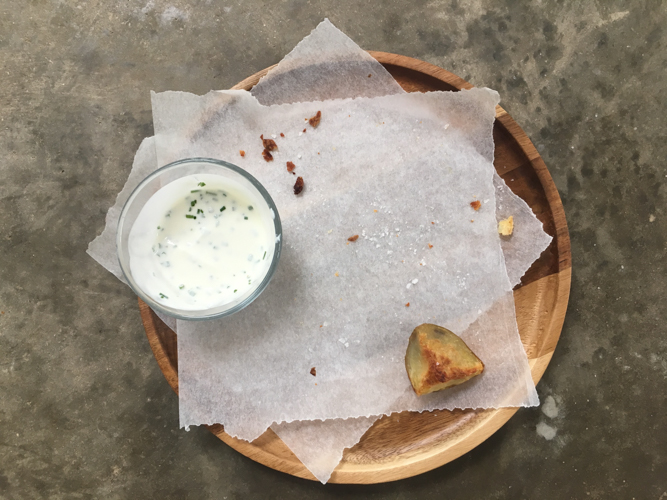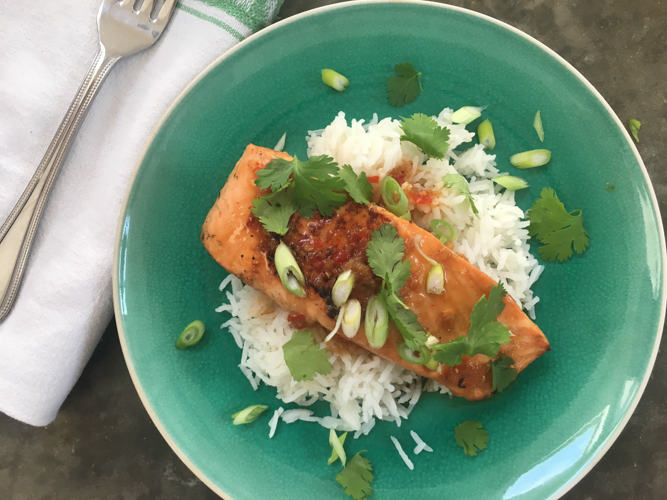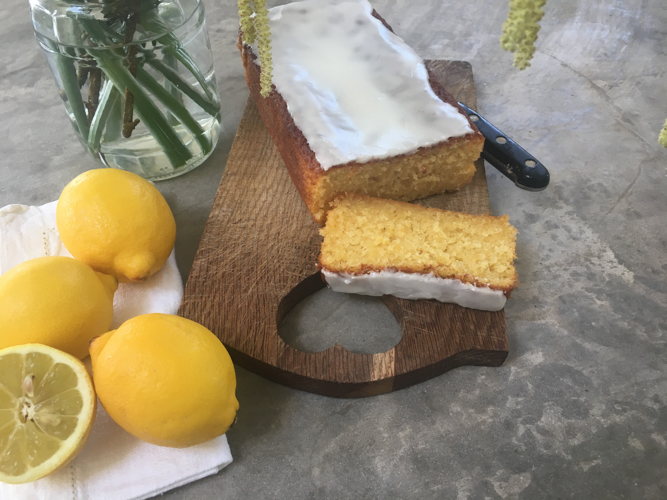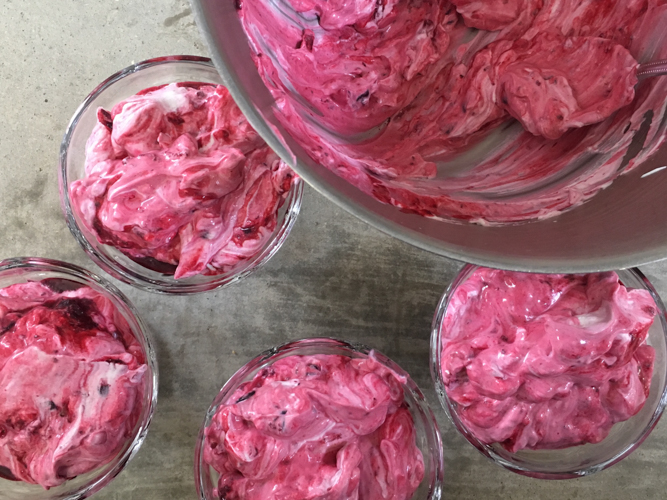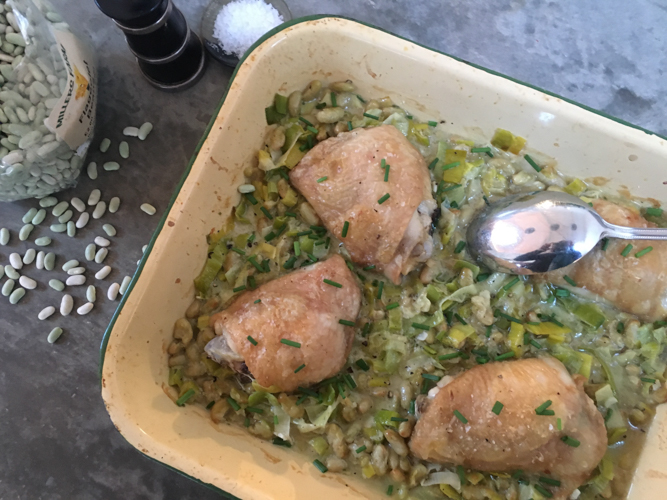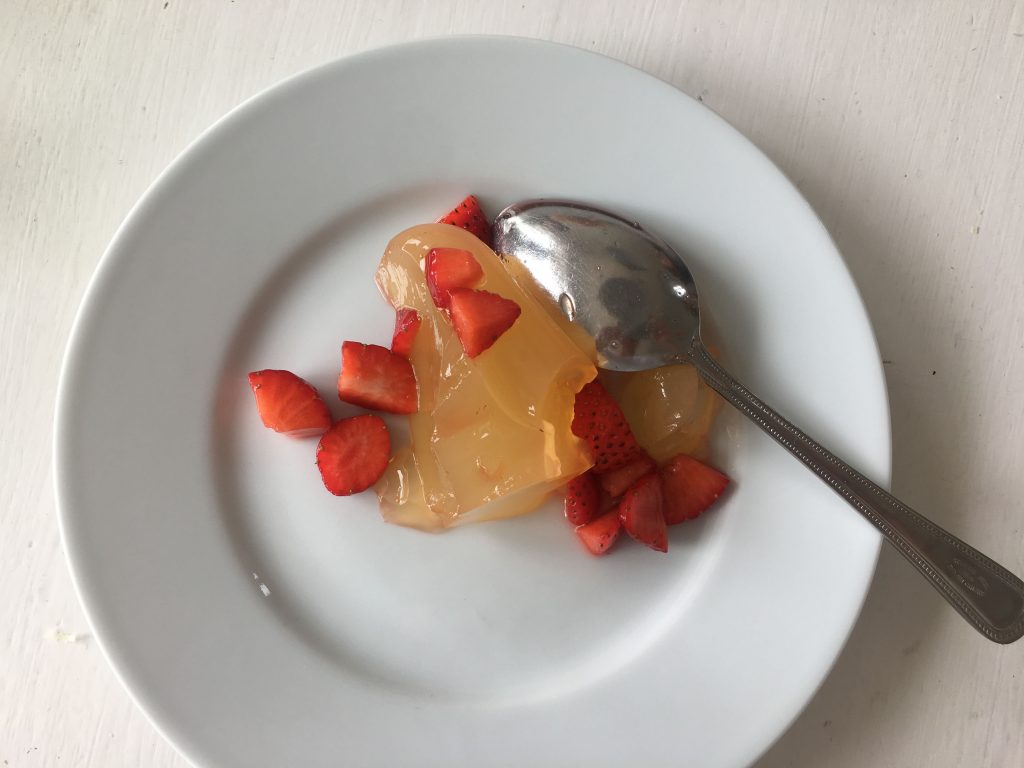
Occasionally it’s not so much a new recipe I need, more a hint or reminder of something. After all I have many, many cook books full of recipes but sometimes lack of energy, time or ingredients mean I’m looking for an old favourite rather than a new idea.
So yes, this is a recipe for roast potatoes but how often do you think of roasties aside from Sunday? These are an absolute winner and get eaten ridiculously quickly whenever I make them. Not just any old roast potatoes these are canapé potatoes or something else for a mezze type lunch potatoes. Pimp them up if you wish, a good dusting of paprika or chilli flakes would add pep and a handful of rosemary always works but I like them just like this, with salt and their tangy, chive and yogurt side.
I guess they are a little like potato skins – I know you can make these by baking potatoes and then removing the fluffy contents leaving you with the skins to roast and crisp but I never have. I do however like the combination of crispy crunchy potatoes with a sour cream and chive style sauce. This then is my way of doing things – you get the crispy skins but also the fluffy interior and I’ve gone for a yogurt based dip, similar but a little lighter and tangier than the original.
Sometimes I serve these alongside a main course but more often they are offered in their own right – a starter or a grazing treat to go with drinks before lunch or dinner. A little dish of sriracha alongside offers that heavenly combination of the cold and creamy yogurt with a belt of chilli heat. It’s not a spanking new fangled recipe, just the re working of an old favourite.
Roasties with Chive Yogurt
This is easily doubled or trebled which I would highly recommend.
500g potatoes, Maris Piper or similar
Olive oil
Salt
150g Greek yogurt
A handful of chives, finely chopped
A small clove of garlic, crushed (optional)
Preheat the oven to 200. Cut the potatoes into chunks about the size of a large walnut. Put into a large pan of salted water, bring to the boil and simmer for 10 minutes. Drain really well, shake briefly in the colander and then put into a large roasting pan, add enough oil to just coat, turning the potatoes well. Sprinkle with salt and roast near the top of the oven for 40-50 minutes until deeply golden and crunchy at the edges. Meanwhile mix the yogurt, chives and a good pinch of salt and let down with a little water if you prefer a runnier dip. Mix in the garlic if you are using. Serve the potatoes on a large plate with the dip and perhaps some sriracha along side. Serves 3-4 as a snack.
